The Rastro is one of those typically Madrilleño experiences that can neither be Disneyfied nor gentrified. Though stalls are more strictly regulated these days, this outdoor flea market retains its raucous edge with vendors shouting out chollos while swarms of punters elbow each other out of the way, some of them so intent on snagging a bargain that they don’t notice their wallets have been stolen until it’s too late. But despite the pickpockets, you can’t really say you’ve seen Madrid if you haven’t plunged into this lively melee at least once.
The name Rastro means trail and seems to go as far back as the market itself. Mentioned by Cervantes and Lope de Vega, it also appears in a 1611 account by the lesser-known writer Covarrubias Orozco: “The place where the rams are slaughtered… was called the Rastro because they dragged them from the corral to the posts to be slaughtered, and due to the resulting trail of blood, the site was given this name”.
With no refrigeration systems, the meat trade was a stinky and often unhygienic business, which is why slaughterhouses tended to be located outside the city gates. When Madrid needed a centralized slaughterhouse, the Rastro Viejo, which now goes by the name of Plaza de Cascorro, was the obvious choice. Just outside the city gates, it was possible for butchers and tanners alike to chuck any waste matter into a stream that ran down the steep slope that is now known as the Ribera de Curtidores.
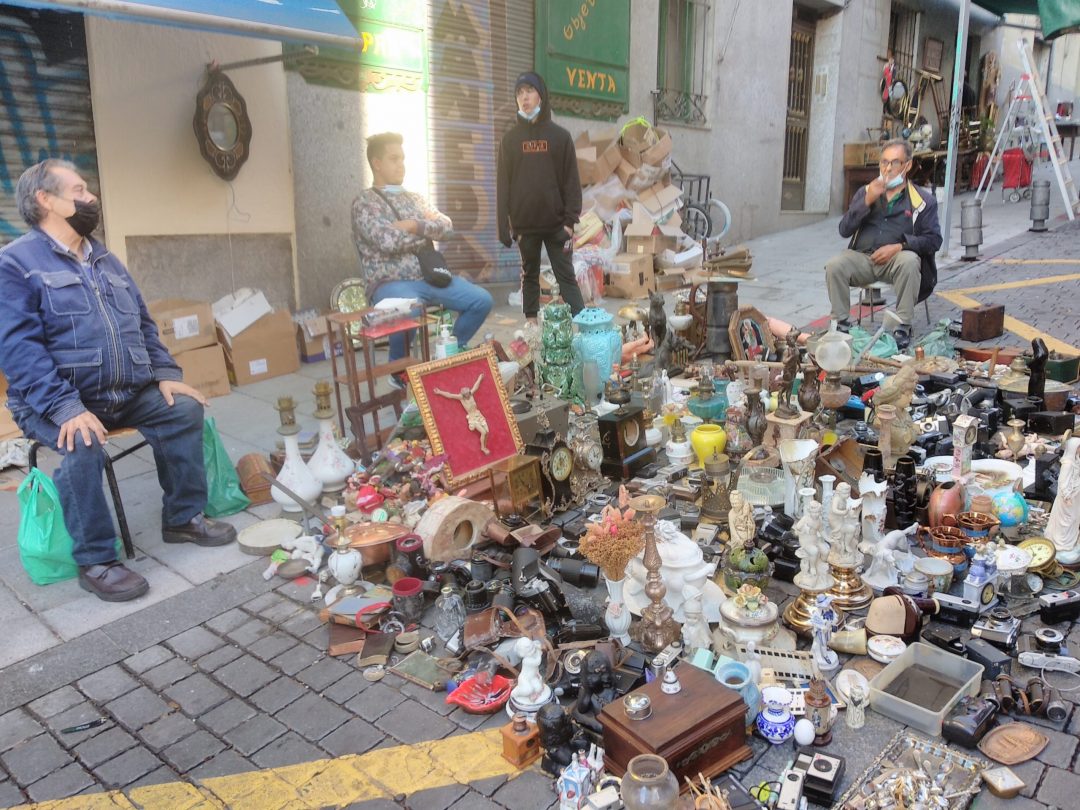
When the slaughterhouse was first built in 1495, a guild system was still in place within the city. This meant that traders in specific goods congregated in particular areas. This held true for the tanners who dragged animal hides downhill from the slaughterhouse. Tanning was an incredibly stinky business, which is why they were relegated to the insalubrious neighbourhood of Ávapies (present-day Lavapiés). Alongside them were shoemakers and candlemakers, who used the tallow from animal carcasses to make their products.
The Rastro Viejo was not only a place to buy meat. Taking advantage of the crowds, unlicensed tinkers selling secondhand clothes also congregated nearby. This was down to an edict given in 1599 that had banned them from the city. Because the Rastro Viejo was outside the city gates and yet still a lively place of commerce, it was a good place to set up shop.
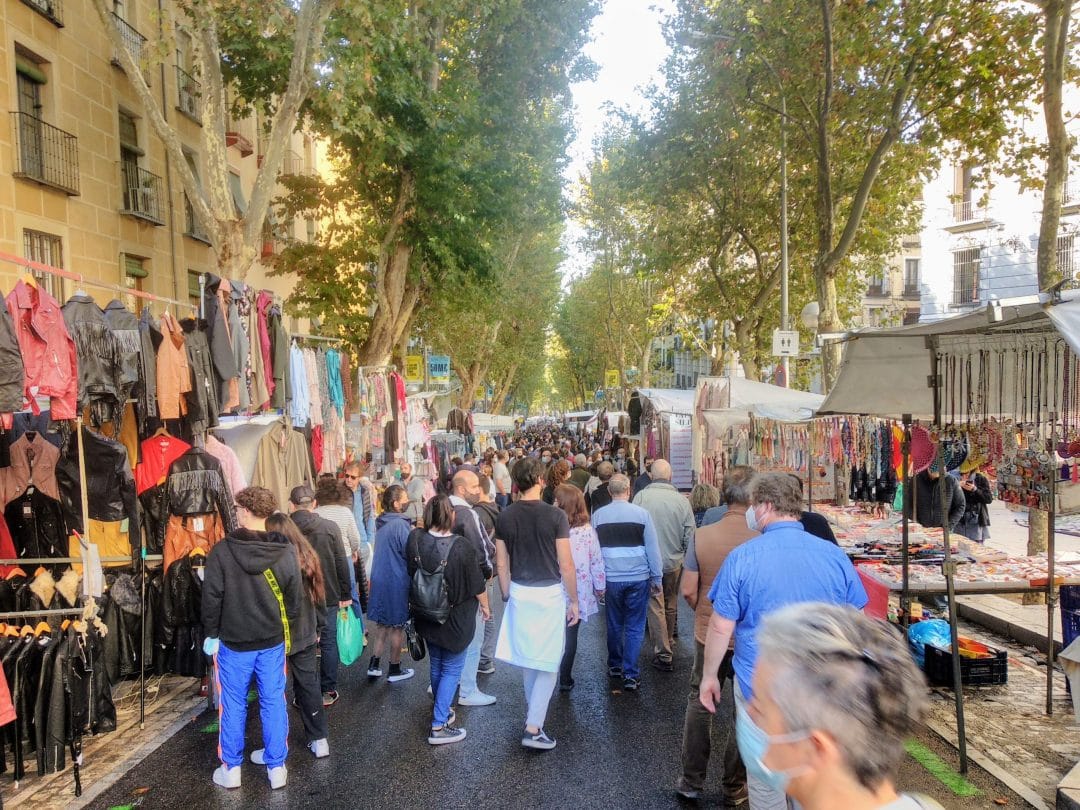
Ever since that time, the Rastro has continued to serve as a flea market cum recycling spot for the city, with its streets filling up with vendors selling their wares on blankets laid out on the street. When the informal market began to get out of hand in 1811, the city started to regulate it, giving out licenses for stall owners. It was around this time too that proper antiques dealers popped up along the streets, selling articles that, if not a cut above the tat on sale on the pavements, was at least guaranteed not to be stolen. Populated by manolos (Lavapies’ working class tribe), gypsies, and cigarreras, that is the independent women who worked in the nearby cigarette factory, the Rastro was a lively place to be in the 19th century.
Despite losing its slaughterhouse, which was moved to the banks of the Manzanares River in 1928, the Rastro has continued to thrive, even staying open throughout the siege of Madrid. And to this day, there’s no better way to spend a Sunday morning than sipping a cold beer at a curbside bar while watching the chaos unfold before you. Just remember to keep a tight grip on your wallet while you do so!
If you would like to learn more about the history of Madrid, why not join me on a unique walking tour of the city.
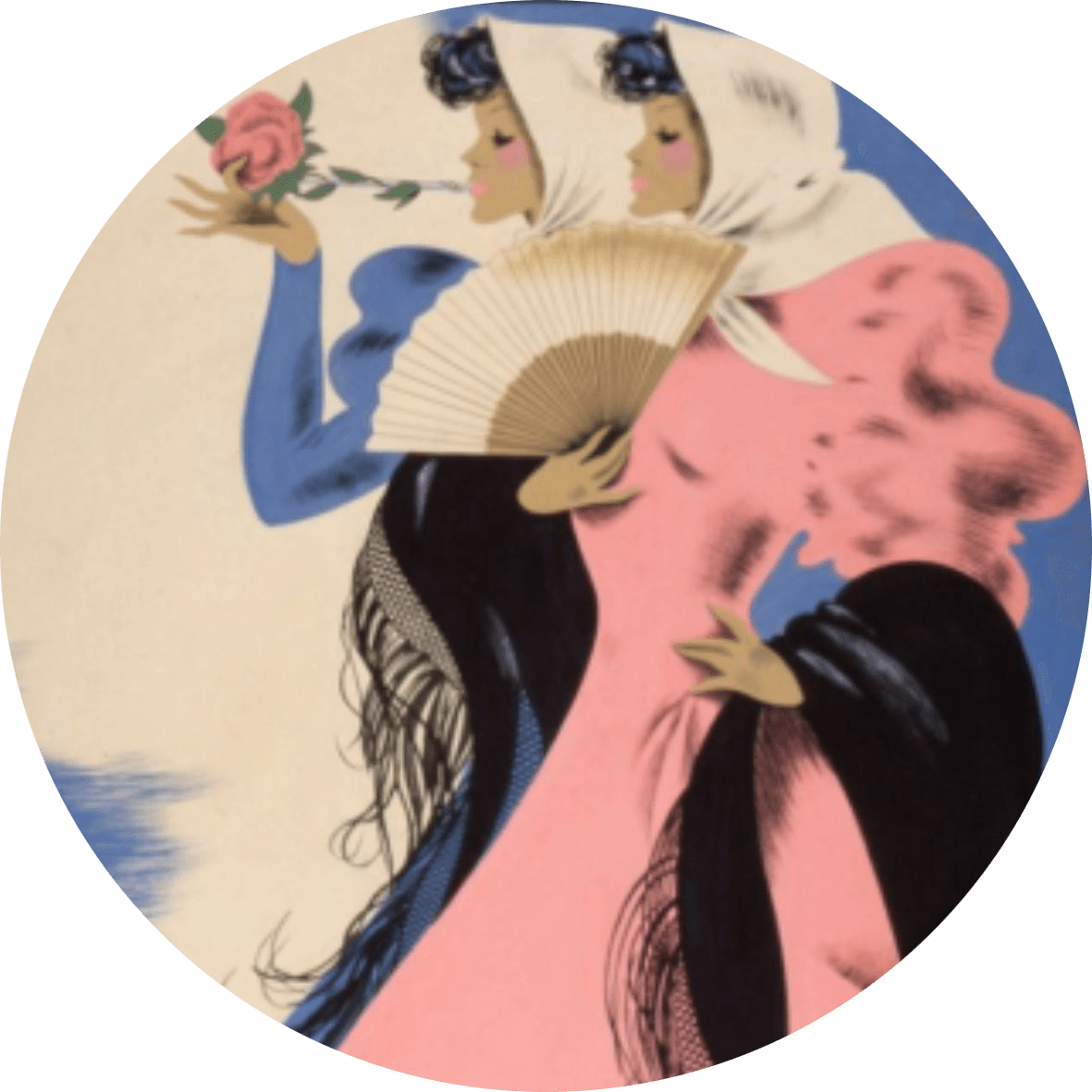
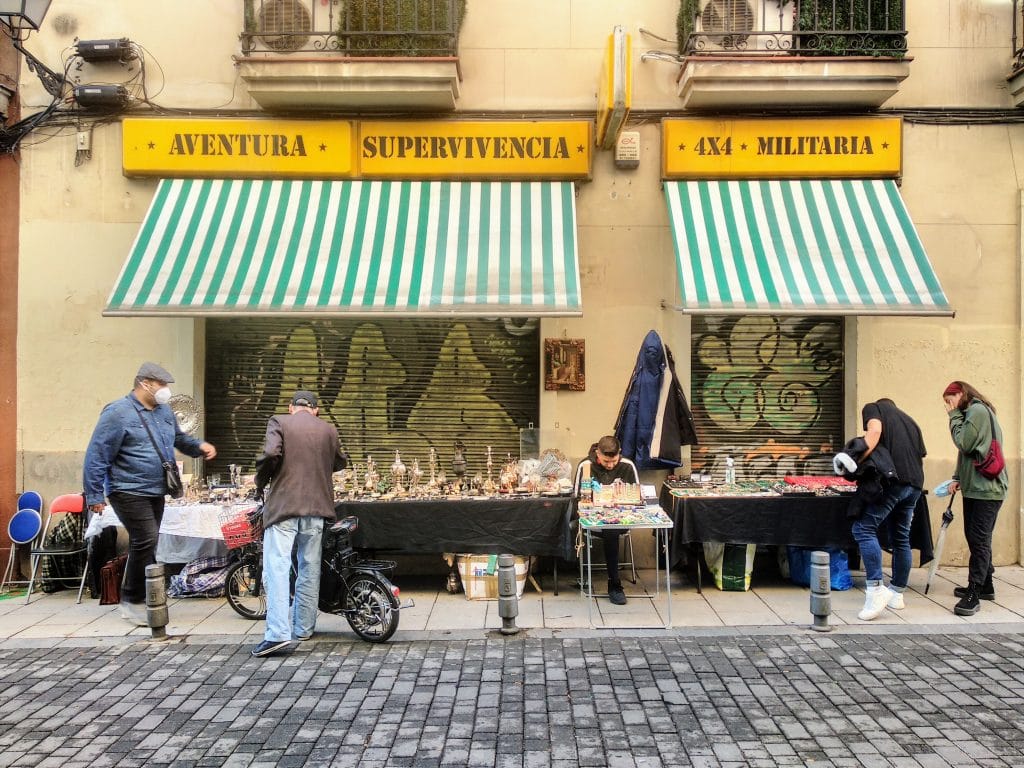
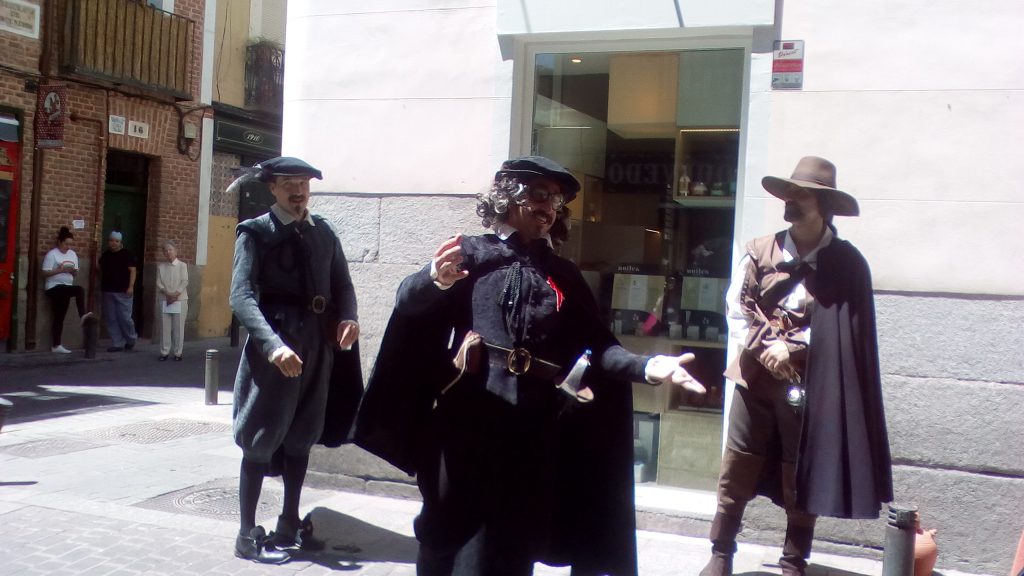
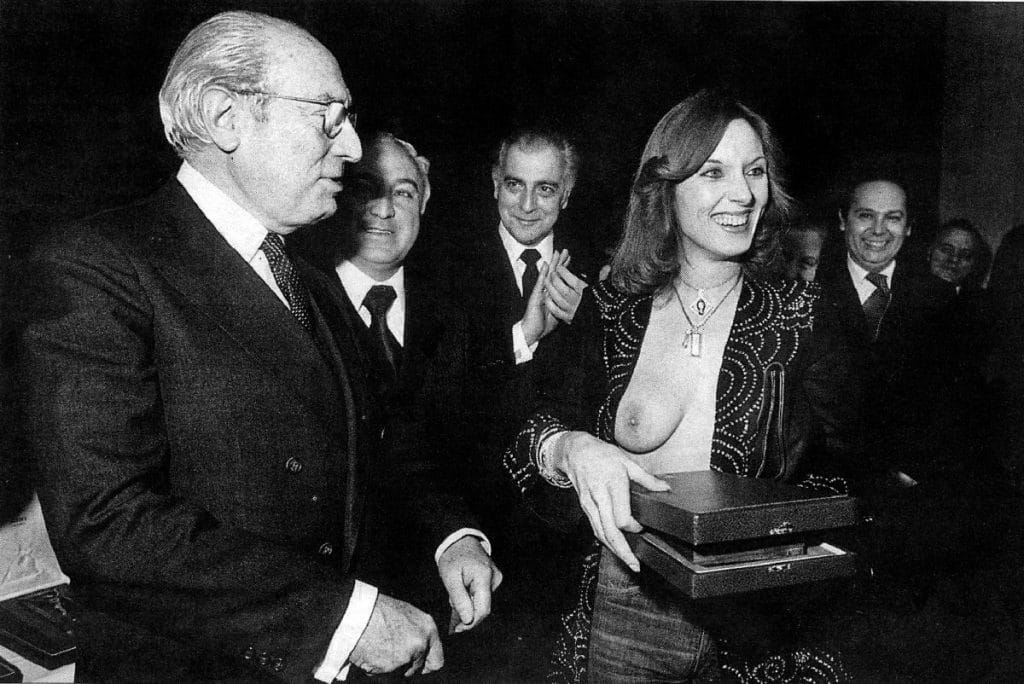
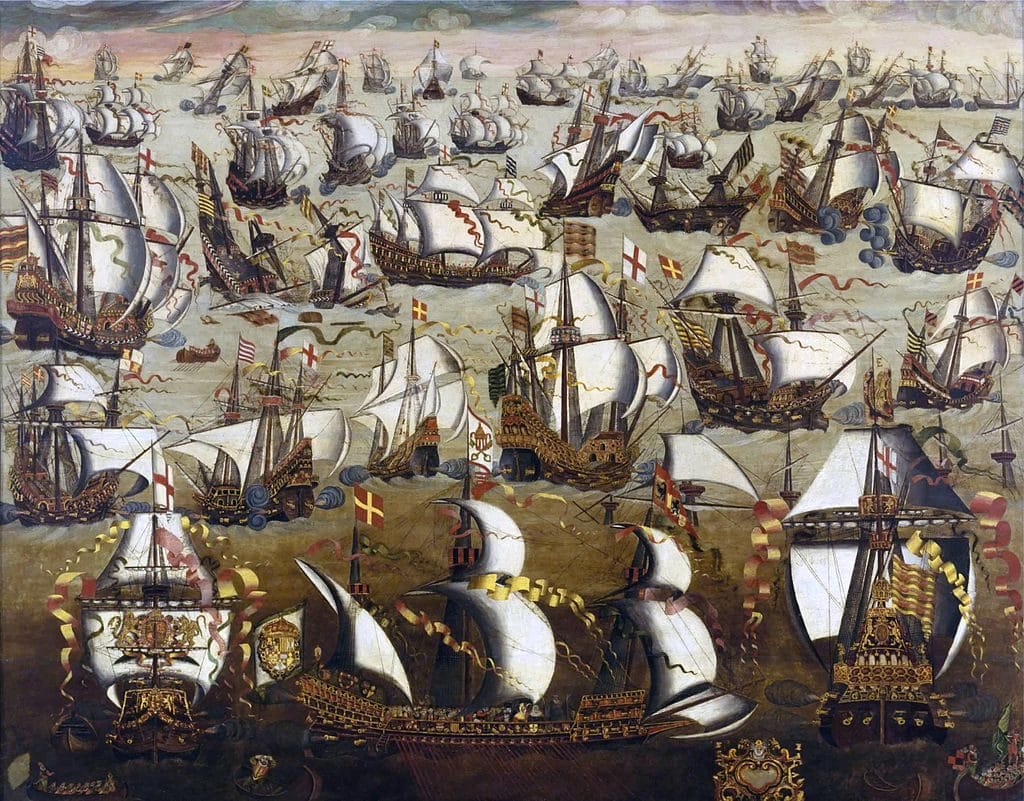
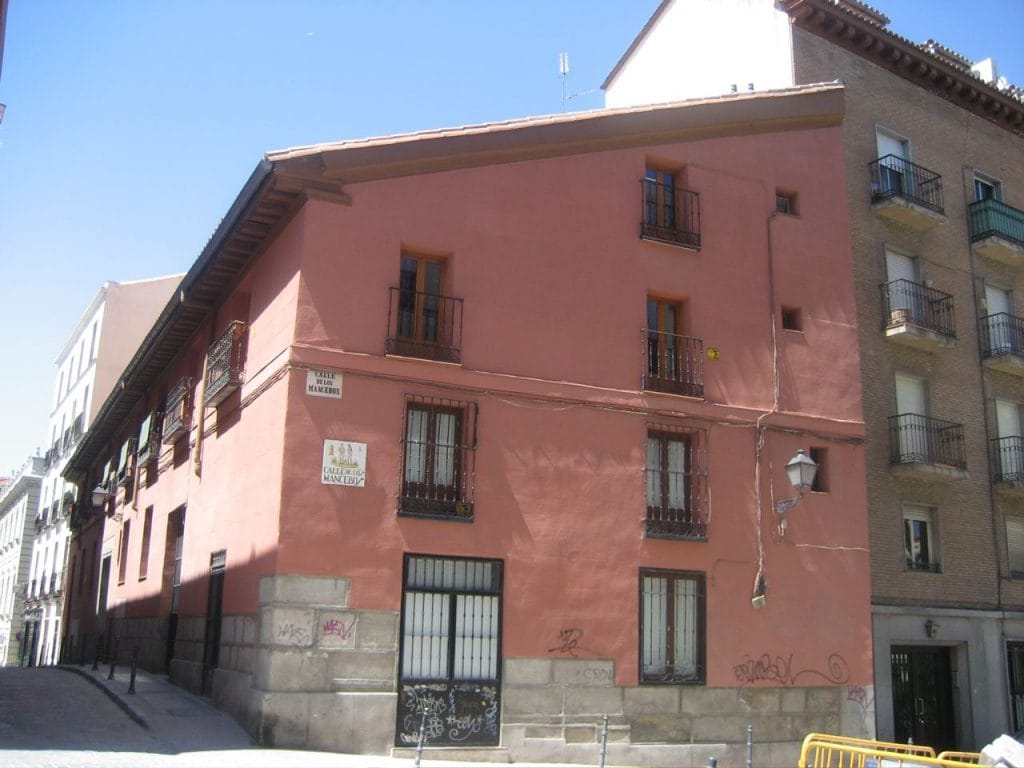
Pingback: How to Survive Summer in Madrid - The Making of Madrid